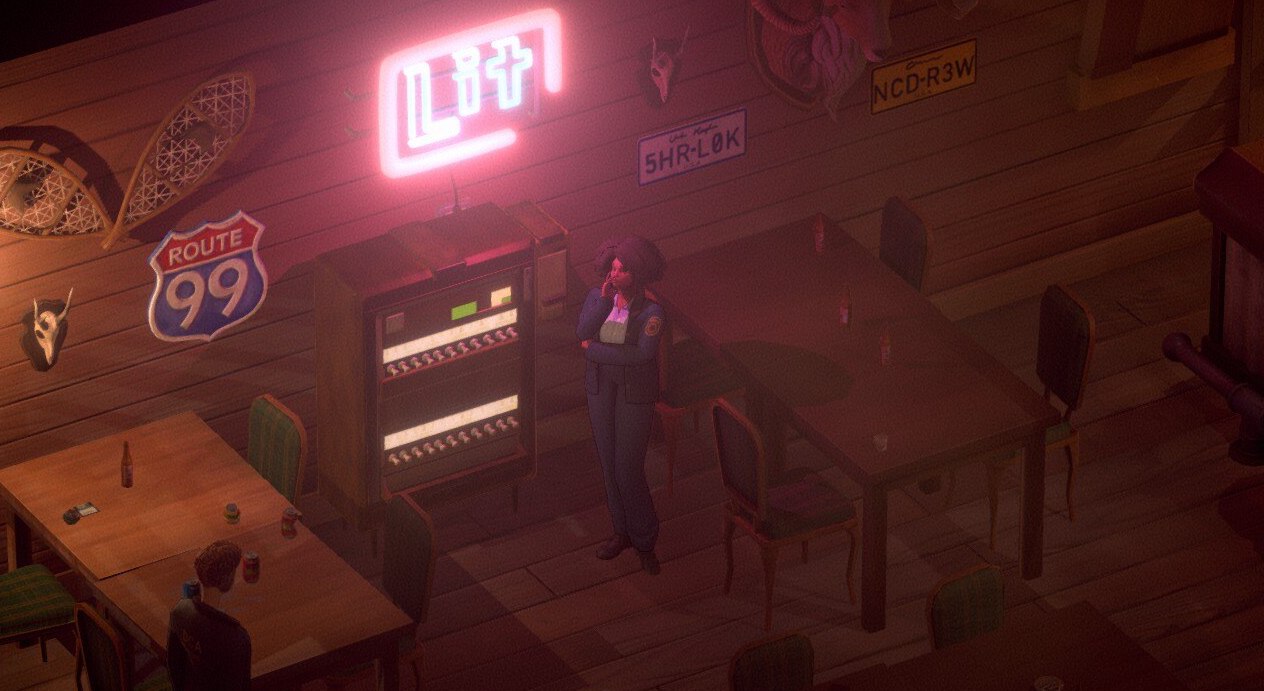Murder Mystery Machine (2019) from the Scotland-based developers Blazing Griffin is a puzzle game in which you play as Cassandra (“Cass”) Clarke, a rookie detective who was just assigned to work with Nate Huston at the District Crime Agency (DCA) within the local police department.
I found Nate’s attitude towards Cass unnecessarily abrasive & off-putting at the beginning of the game. Nate warms up to her as she proves herself through her actions and choices, and over time you learn more about Nate’s background and history with the department – and specifically the suspicious captain who asks you to spy on your new partner. There is a reason for him being, well, a jerk towards Cass, but I still I wish I didn’t have to cringe my way through those early interactions when I was just starting the game. Perhaps the tutorial should have taken place at the academy just before Cass’s graduation.
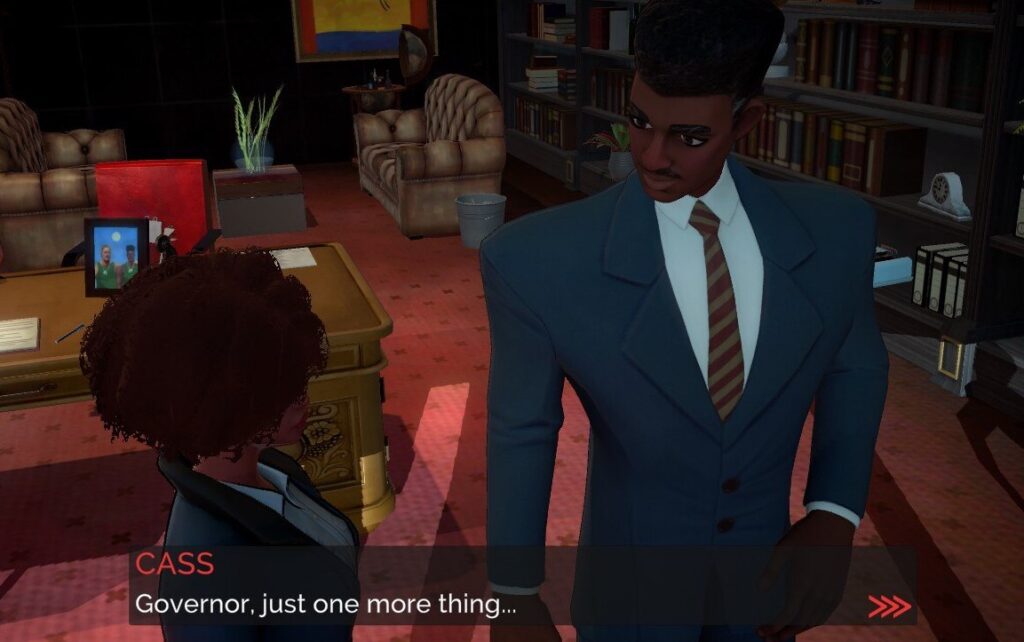
Other than the rough opening I enjoyed playing through the 8-episode first season. While the detective parts were a bit too simplistic compared to the studio’s later games staring the world-famous Hercule Poirot, I felt they did a pretty good job of translating the feel of watching a serialized police procedural like The Mentalist or Columbo to the interactive medium of games.
As I mentioned, Blazing Griffin would go on to release Hercule Poirot: The First Cases (2021) and Hercule Poirot: The London Case (2023). The First Cases was actually my first exposure to the studio because even though Murder Mystery Machine‘s episode 1 came out much earlier, it was initially exclusive to Apple Arcade and I was too busy playing Grindstone.
It was interesting playing Murder Mystery Machine (“MMM” henceforth) after The First Cases because I could see the shared DNA between the two games:
- Exploring a crime scene to collect evidence
- Talking to suspects and witnesses
- Connecting the dots and making deductions
Except, MMM did all of those on a much smaller scale – paving the way for their subsequent murder mystery games. While The First Cases lets you navigate somewhat large spaces with multiple rooms to explore and return to, MMM places you in small isolated dioramas. Once you’ve gathered the few clues there are, you go into your workspace (similar to the mind palace in The First Cases) to make deductions and unlock additional dialogue options when interviewing people.
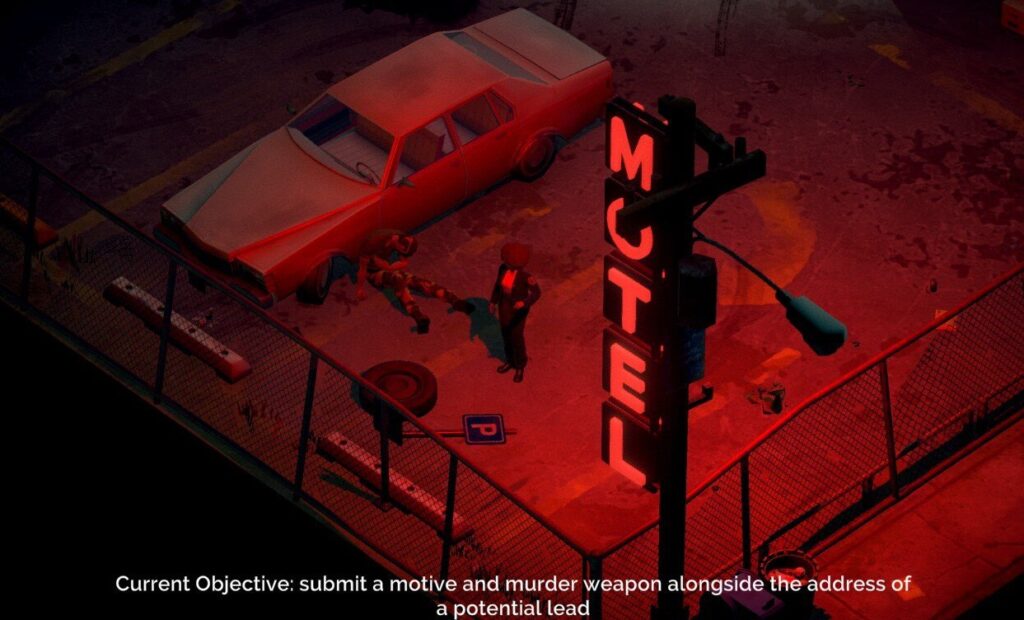
I appreciated the diversity of the cases. It didn’t feel like each case was just the previous case but with different character names. Each of the eight cases felt unique in their motives & means, and they developed in different ways across the five scenes that make up each case. Each scene takes place in small isolated spaces – a parking lot, a jazz club lounge, a newspaper office – to explore and features one or two suspects and witnesses to talk to.
With each scene you’re learning more about who are all the people involved and how they are all involved – who had the motive and the opportunity? What was the means by which they committed the crime? You’re also uncovering leads that take you from one scene to the next, ultimately culminating in revealing – but not necessarily arresting/charging – the killer.
As you progress through the cases you begin to uncover something much bigger and eventually the cases become connected with each other. That overarching mystery was decent. I could tell where things were going pretty early on when the recently-opened Water Treatment Plant came up the second time and I made a few deductions of my own about where the plot was going.
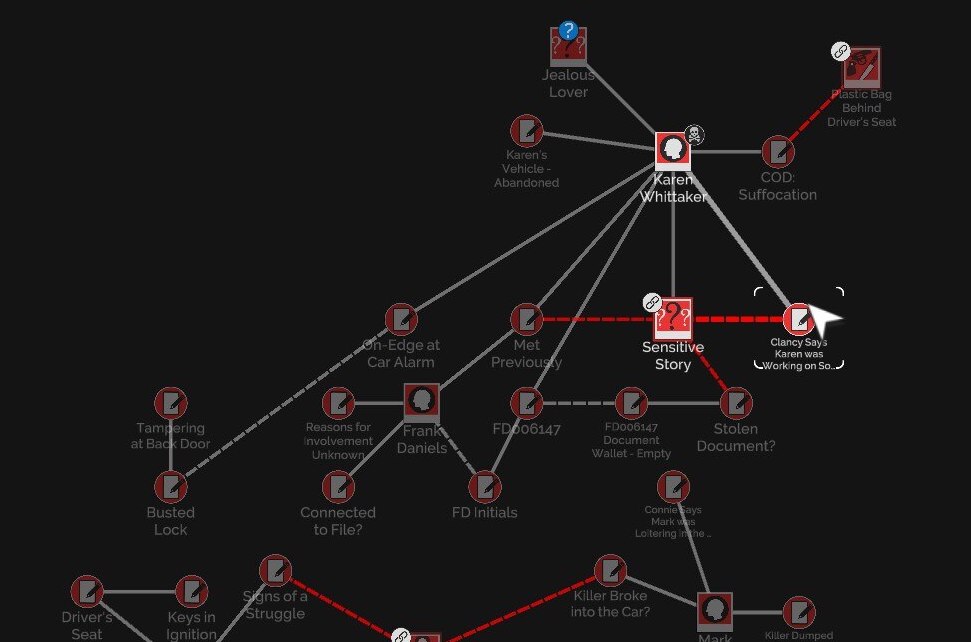
On the subject of deductions – I remember enjoying the connecting-the-dots part of The First Cases a lot more than I did in MMM. In MMM each scene has a certain number of deductions that you can make and in addition to those you can also substantiate evidence. You can connect two related pieces of information to, say, substantiate a suspect or a lead for a location; and when you connect two specific pieces of information you make a deduction, which often unlocks a dialogue option.
I occasionally found those deductions rather frustrating and requiring a lot of trial-and-error to connect the correct pieces of information. Part of the reason is that the way the information is represented in your “mind palace”-style work space is often with very brief (too brief) descriptions. They’re also frequently connected to very similar pieces of information, and it wasn’t obvious which of the two very similar nodes should be connected to which other two very similar nodes.
So I would end up trying to make connections between the wrong nodes, and then when I’d use the built-in hint system it would highlight a node right next to the one I was trying to use before and I’d be like “oh, wow, I was so close.” Fortunately, using the hint system just lowers your detective rank which… doesn’t actually do anything. I guess I’d feel more bad about not getting an A+ when closing a case if I didn’t feel like some of the deductions were… kind of bullshit?
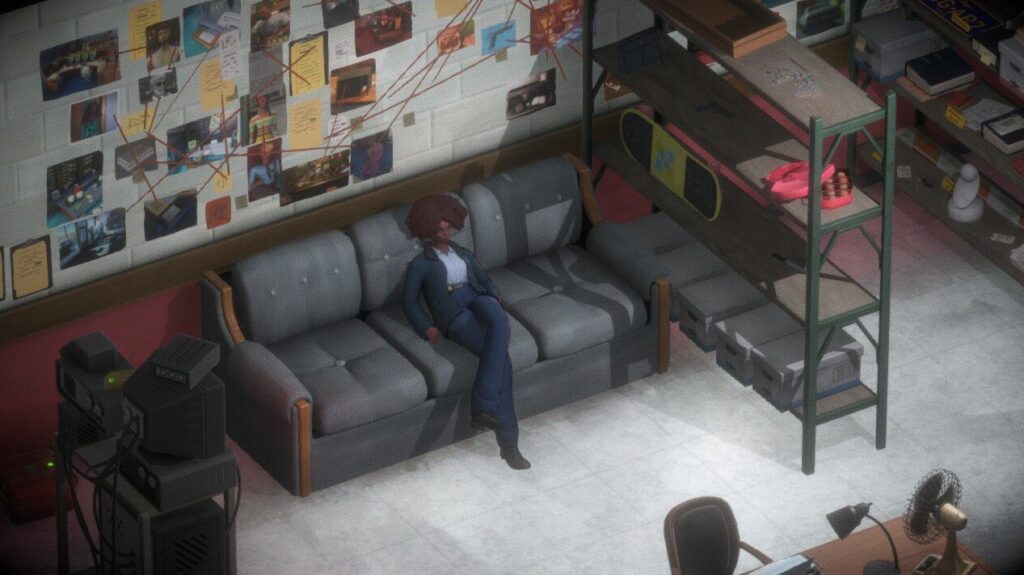
The hint system will also show you if you’ve missed any clues in the environment. That happened to me a few times – I had simply not rotated the camera into the correct angle to be able to see some piece of evidence in the scene. The way they’re marked in your view – with little white dots – is also hard to see sometimes. Now, it’s been a hot minute since I played The First Cases, but – you can guess what I’m about to say – I remember that game doing the clue/evidence gathering part better.
Again, I enjoyed my time with MMM and do think it’s a decent stab at making an interactive version of a police procedural show. Despite my minor gripes it’s a fun time, and more than that it’s an interesting artifact of Blazing Griffin figuring out how to make this style of game and learning a bunch of lessons about what works and what doesn’t. Based on the reception this game had, I would be genuinely surprised if they ever make a second season, but I wish they do! I would love to play a version of MMM made by a studio that has made three of this style of game.


